New horizontal launch capability will deepen ties with NASA
An agreement between Space Centre Australia and NASA could see satellites launched into space from RAAF transport planes in a key step towards an international space port in Cape York.
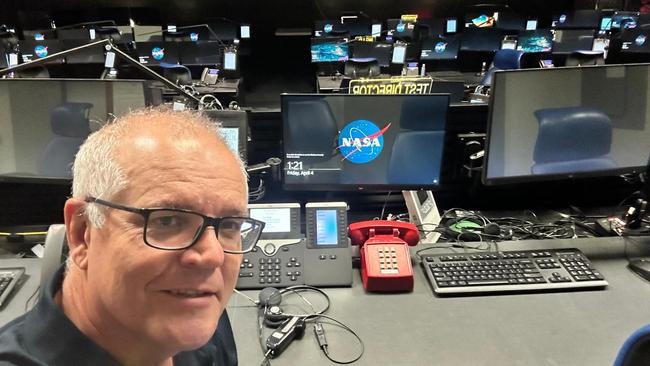
A new agreement between Space Centre Australia and NASA for a “horizontal launch capability” is being framed by the company as a key step towards the opening of a major international space port in Cape York that could transform the North Queensland economy.
The proposed horizontal launch capability would allow a rocket to be deployed in mid air from a C-130 Hercules military transport plane and deliver a payload weighing up to 250kg – including satellites, scientific instruments or autonomous robotic systems – into a low Earth orbit.
SCA’s US-flagged company inked its first Space Act Agreement with NASA on Friday, local time, to begin testing of the horizontal capability – developed under its flagship Karman Line project – at the NASA Wallops Flight Facility in Virginia.
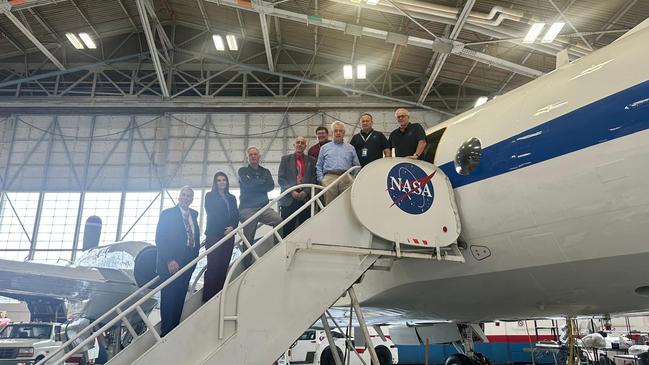
The company’s non-executive chairman, Scott Morrison, told The Australian this capability would fill an “important gap in the market” because it would allow for shorter lead times and smaller payloads to be delivered more swiftly into space.
Mr Morrison said the space agreement would deepen the relationship between NASA and SCA, bringing the company a step closer to realising its vision to transform North Queensland by opening a major international space port at Cape York.
He said NASA could use the proposed vertical launch space port at Weipa to support its Artemis campaign – a series of missions aimed at returning humanity to the Moon and establishing a sustainable presence there.
The former prime minister said the Karman Line project would also be very supportive of AUKUS Pillar Two, aimed at nurturing greater co-operation between Australia and America in hi-tech areas.
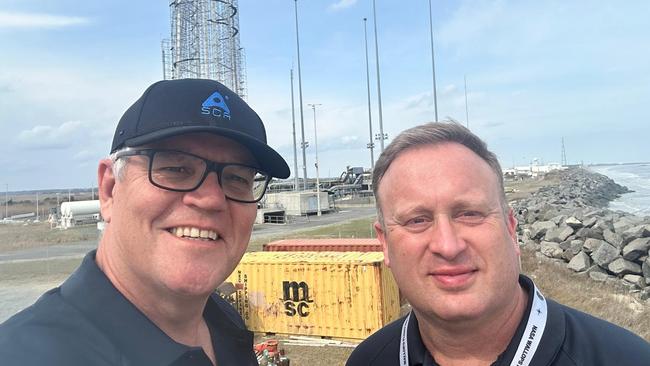
Mr Morrison, the chief architect of the AUKUS pact, said that “it was always intended that space would be part of Pillar Two – so this is a great way for Australia-originated companies to contribute”.
SCA chief executive James Palmer said this first agreement with NASA would provide for “inert testing” of the horizontal launch capability – including of its guidance and computer systems – which would take place inside the hangar at Wallops Island.
Several more agreements with NASA would then be expected to take the Karman Line project to commercialisation within a three- to four-year time frame.
“The easiest way to picture it is that it is a rocket like any other rocket,” Mr Palmer said. “That’s where the payload sits. The rocket sits on a special cradle and the rocket and cradle sit inside the cargo aircraft, in this case a C130-Hercules.
“What happens is you are at 20,000 feet, you open the back door, a parachute will deploy out, that will pull the rocket out of the aircraft. The parachute is connected to the cradle. It pulls the whole thing out. The cradle detaches from the rocket. That will then fall away. The rocket is in free fall and, very quickly, it will self-ignite and then put itself under its own control and then adjust itself and point up to space and then make its way up into orbit.”
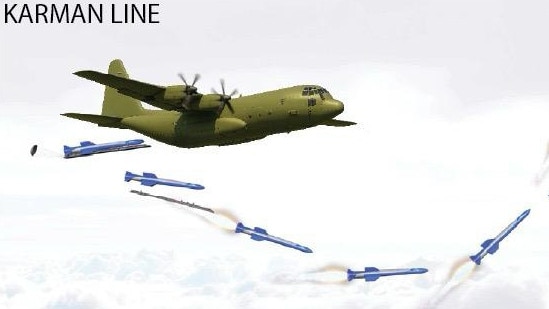
Future space agreements between SCA and NASA will test each stage of the process from safely flying the aircraft to air drop testing before progressing to hot fire testing.
Because the capability would fill a market gap, Mr Palmer said the technology was in high demand and there were “already a number of customers internationally that have expressed interest”.
“There are customers lined up already on our books that want to put their payloads on Karman Line to get their satellites into orbit. They are from Australia and the US,” Mr Palmer said. “One particular customer has satellites that work in the communications and conservation area. Those particular satellites also do remote bushfire monitoring. That’s a really important customer to us.
“There are other customers that work in the surveillance area as well that want to look at constellation deployments – launching lots of satellites into low earth orbit for surveillance and reconnaissance.
“To be very clear, we are not in the space of weapons deployment … Having said that, there is the opportunity to work in areas with governments and like-minded friendly governments to look at potential applications of satellites that do intelligence and reconnaissance works. We will never touch anything to do with weapons deployment.”
Wallops Flight Facility director David Pierce said he was “excited to enter into this agreement with Space Centre Australia and the work we’ll do together to enable this new US commercial launch capability and grow the space economy on Virginia’s Eastern Shore”.
Mr Morrison and Mr Palmer – who both visited the Wallops Flight Facility for the announcement – made clear the signing of their first space agreement with NASA was a step towards the realisation of a much bigger vision: the development of an international space port at Weipa in Far North Queensland.
“This is a fairly unique proposition,” Mr Morrison said. “When I’m here I talk about how space can form part of AUKUS and the Quad leadership. We have some not only smart people but unique geography.”
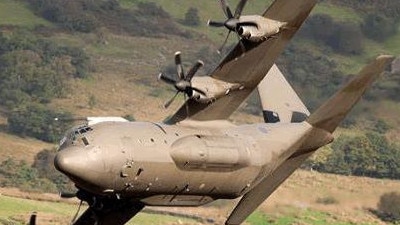
He said that Weipa was only 12 degrees south of the equator – much closer than the
Kennedy Space Centre (28 degrees away) or Boca Chica in Texas (26 degrees away).
Mr Palmer said that location was “one of the key aspects for a space port. The fact that you are placed where we are, 12 degrees south of the equator, is an optimal location to save fuel from a launch. Your payload will also be able to spend a lot longer in space.
“It helps us address a wider issue, which is the established fact that there are not enough space ports globally to sustain large amounts of launches,” he said. “With the (NASA) Artemis program in particular that requires a lot of launches to reach those objectives. Put simply it can’t all be done in one location being Cape Canaveral.
“There is a huge opportunity to leverage, with this relationship, a deeper-level relationship more broadly with NASA and industry in the US to be one of those program participants where you can have a space launch mission from Cape York.”
Further sketching out the vision, Mr Morrison declared: “The sort of thing that you’ve seen from Space X in Boca Chica and rockets of that scale – that’s what we hope to be able to provide a launch pad for in Australia.”




To join the conversation, please log in. Don't have an account? Register
Join the conversation, you are commenting as Logout